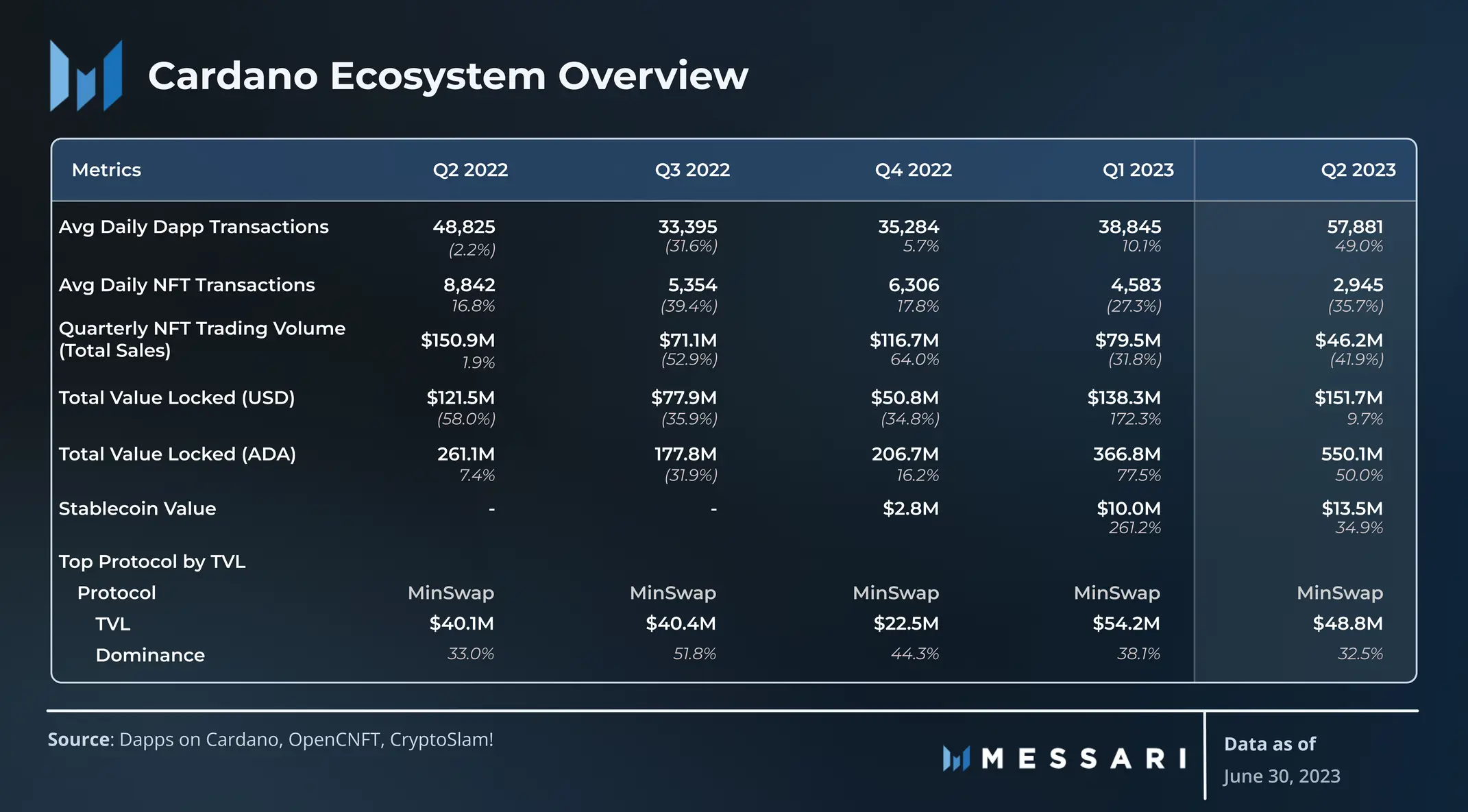A recent report by analytics firm Messari, sponsored by Cardano developer Input Output, highlights the quarter-over-quarter growth of the Cardano blockchain.
The analysis has compared data from the second quarter to the first, revealing substantial improvements in value locked and transactional metrics, amidst a flurry of technical enhancements and increasing interest from developers.

Decentralized exchange Minswap exhibited the highest absolute growth, but several other emerging decentralized applications (dapps) have also played substantial roles in driving these increases. This promising news comes despite a slight downturn in the number of daily active users, which decreased by 4%—marking the fourth drop in address activity over the past five quarters.
However, it’s not all negative on the user activity front. The report also notes, “The ratio of transactions to active addresses has been growing steadily over the past five quarters, suggesting that the average user is more active now than they previously were.” The Transaction / Active Address ratio rose 6.1% QoQ and 13.2% YoY to 1.19 in Q2.
Blockchain load & locked tokens
Other key metrics noted in the report include blockchain load—a measure of the volume of data contained in blocks over a certain period—which increased to 50% from under 40% in the previous quarter, peaking at an impressive 81% in May.
As of Monday, data from DeFi analytics platform DefiLlama showed that tokens worth $175 million are locked on Cardano, hitting the highest level for this year. However, this is still half of the lifetime peak of $340 million reached in May 2022.
Network upgrades steer Cardano forward
These developments coincide with significant upgrades Cardano has undertaken since the beginning of the year. A change to reduce epoch transitions took effect in June, facilitating smoother operation of the blockchain for network users. Epochs on Cardano last 432,000 slots, with each slot being one second long.
During these epochs, ADA tokens are staked, which helps produce new blocks on the Cardano network—potentially escalating the demand for the tokens as block rewards become more enticing based on activity.
A milestone feature launched in March on Milkomeda—a network connecting blockchains to the Ethereum Virtual Machine (EVM)—allowed Cardano blockchain users to access EVM smart contracts with any Cardano (ADA) wallet, thereby widening the ecosystem’s utility. This feature permits Ethereum application developers to construct on Cardano’s network using Solidity—the computer language used to code Ethereum—without the need for new toolkits or learning a different computer language.
As the Cardano network continues to progress, it appears set to keep attracting a growing number of users and developers. The combination of increasingly robust technical infrastructure, ongoing innovations, and growing developer interest paint a promising picture for the future of the Cardano ecosystem.